British Victorian Gardens: Style, Influence and Evolution
The Victorian period, spanning from 1837 to 1901 under the reign of Queen Victoria, was a transformative era for British garden design. Marked by industrial progress, colonial expansion, and shifts in cultural aesthetics, gardens of the Victorian age mirrored the complexities and innovations of the time. The evolution from early to late Victorian styles reflected not only changing tastes but also advances in technology, global plant exploration, and the influence of notable garden theorists, designers, and patrons.
This post explores the stylistic developments across the early, mid, and late Victorian periods, focusing on landscaping and groundwork, hardscaping materials, design motifs, planting styles, and the role of significant figures such as John Claudius Loudon, Gertrude Jekyll, William Robinson, and others.
Early Victorian Gardens (1837–1850s): The Picturesque and the Gardenesque
The early Victorian period inherited the aesthetic ideologies of the late Georgian era, particularly the Picturesque movement championed by figures like Richard Payne Knight, Sir Uvedale Price, and William Sawrey Gilpin. These theorists emphasized gardens that mimicked natural scenery, avoiding geometric rigidity and instead promoting visual interest through variation, contrast, and organic arrangement.
Picturesque style parkland – this garden design and landscaping style sort to emulate the natural landscape whilst highlighting aesthetically pleasing elements such as lakes, ponds, bridges, follies, copse or lone trees, and elevating them through careful framing of the vista.
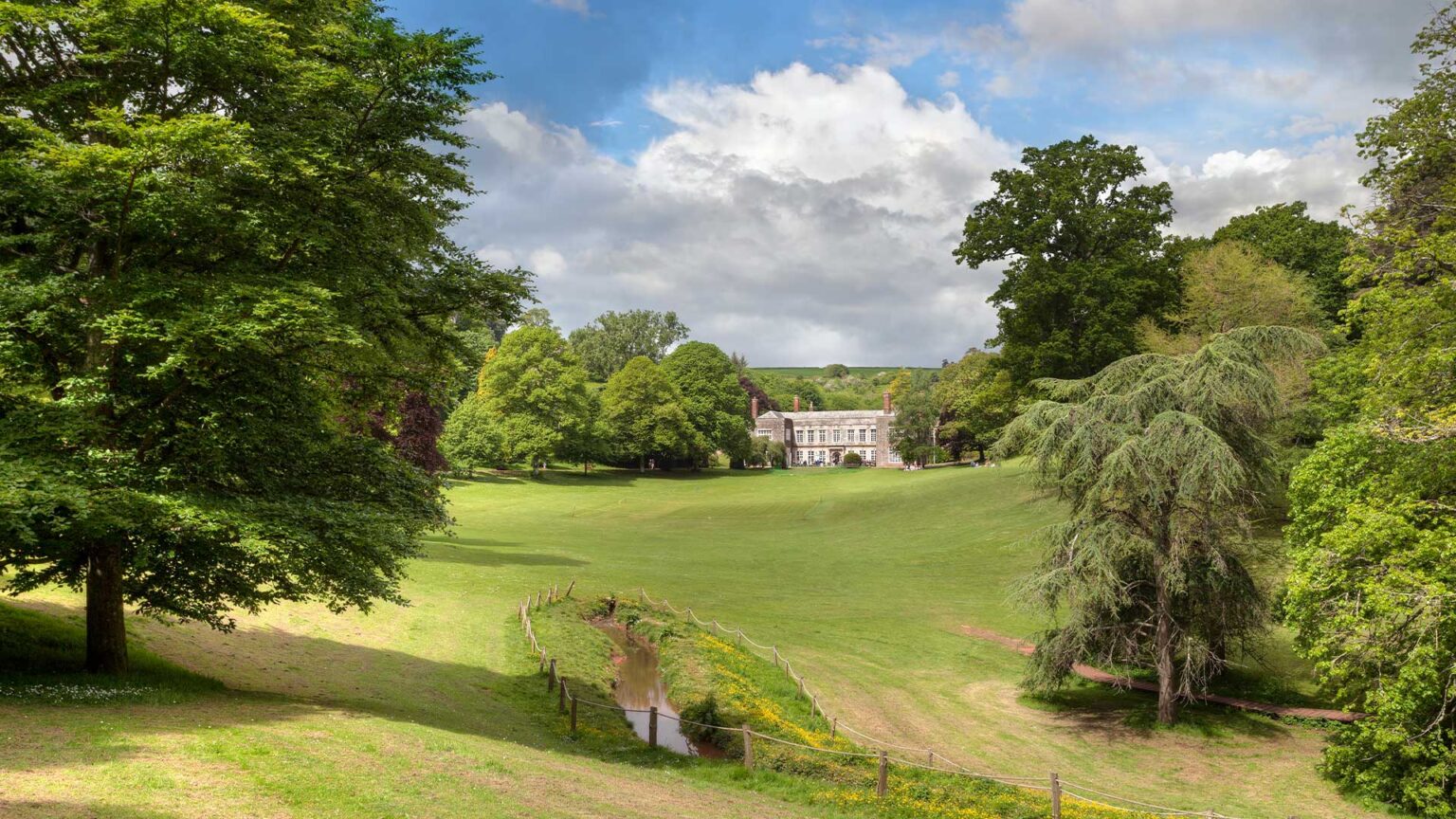
Landscaping and Groundwork: Early Victorian gardens were heavily influenced by the naturalistic Picturesque ideal. Winding paths, asymmetrical layouts, and topographical variation were used to simulate the unpredictability of nature. The groundworks often included expansive lawns bordered by tree clumps, artificial lakes, rockeries, and grottos.
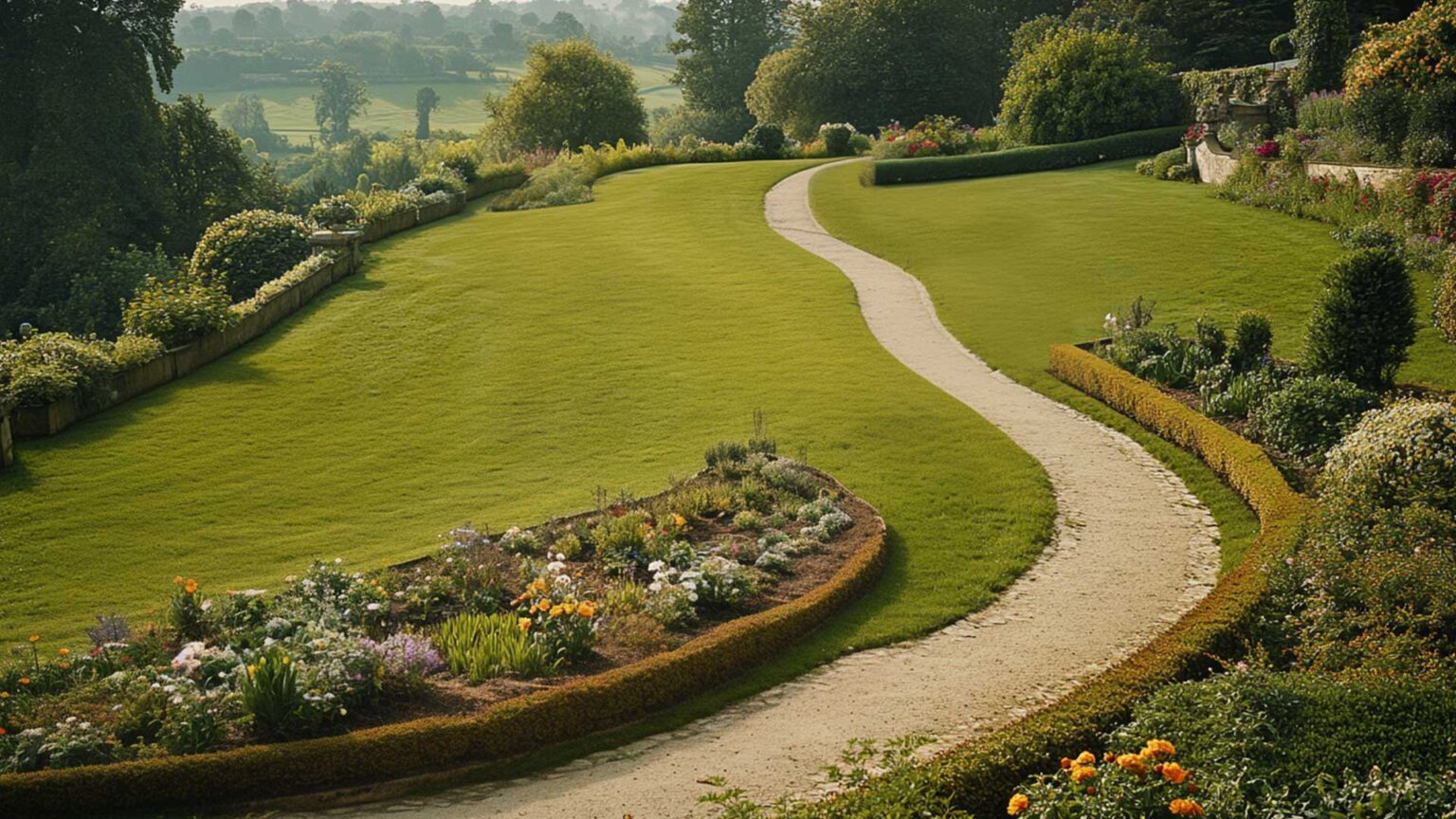
Paving and Hardscaping Materials: Gravel was the primary material for paths, edged with stone or timber. Rustic bridges, lattice fences, follies and grottos added a romantic element. Early ironwork began appearing in railings and gates, a harbinger of the more ornate features to come.
Materials:
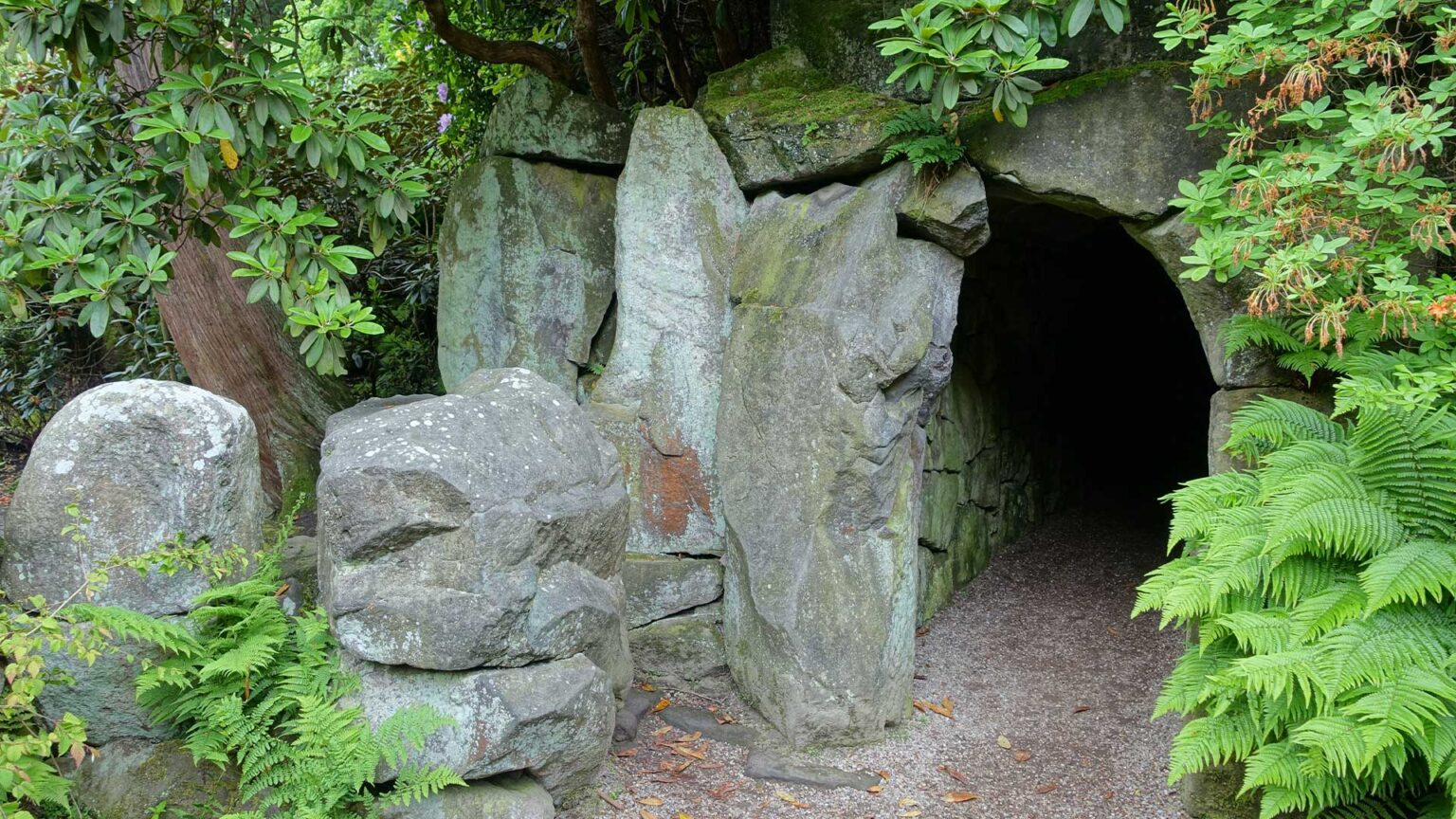
Design Motifs and Features: Rustic summerhouses, ornamental ponds, and rock gardens were typical features. Artificial ruins and faux-antique statues were common decorative elements, drawing from the Picturesque tradition’s fascination with time and decay.
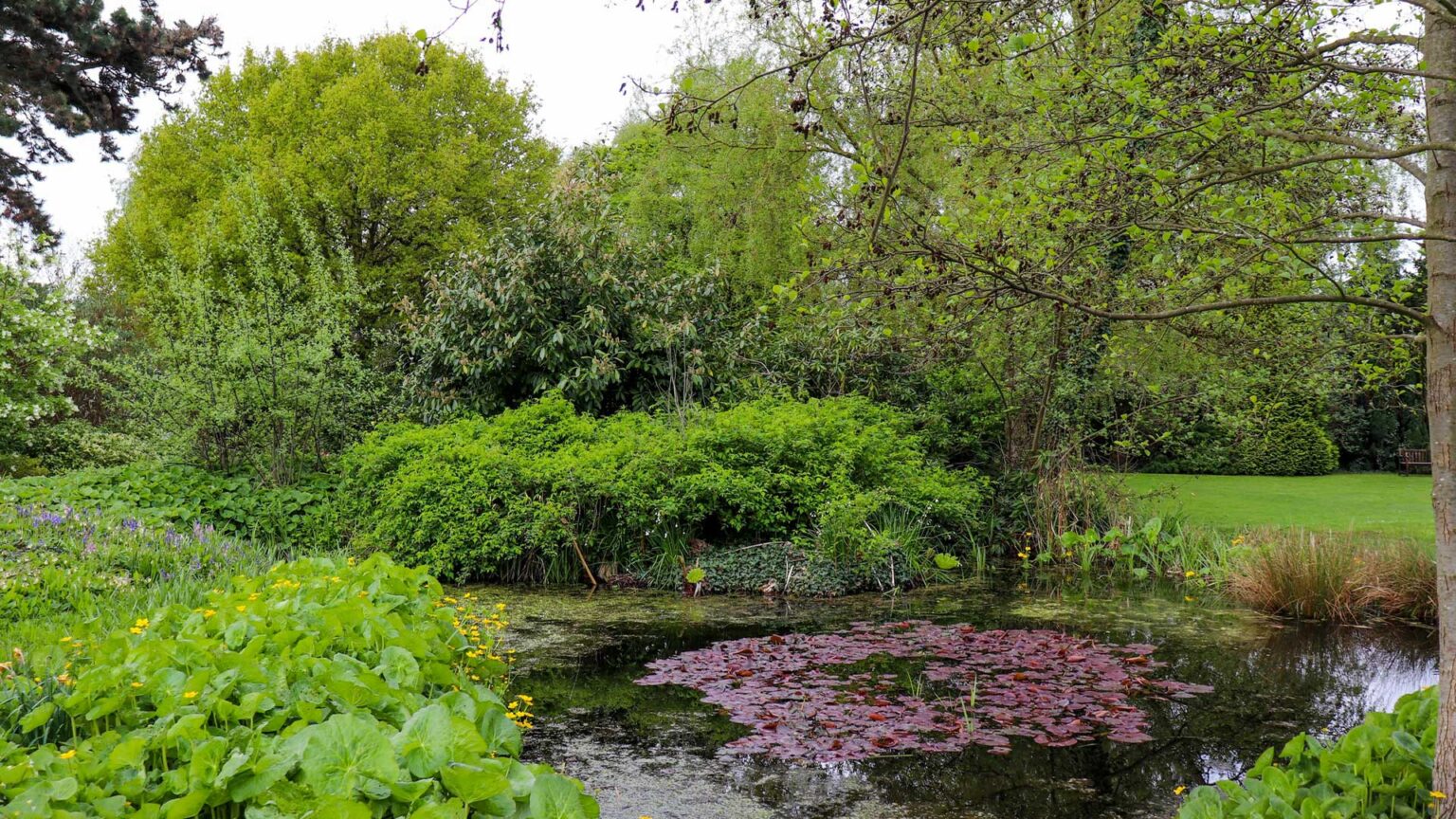
Planting Styles: John Claudius Loudon, a defining voice of the era, advocated for the “Gardenesque” style, where individual plant specimens—especially exotic imports—were showcased with clear space around them for appreciation. Trees and shrubs were carefully selected and labelled. Loudon’s influence helped spur the widespread use of conservatories, as improved glazing techniques allowed more homes to cultivate tender exotics.
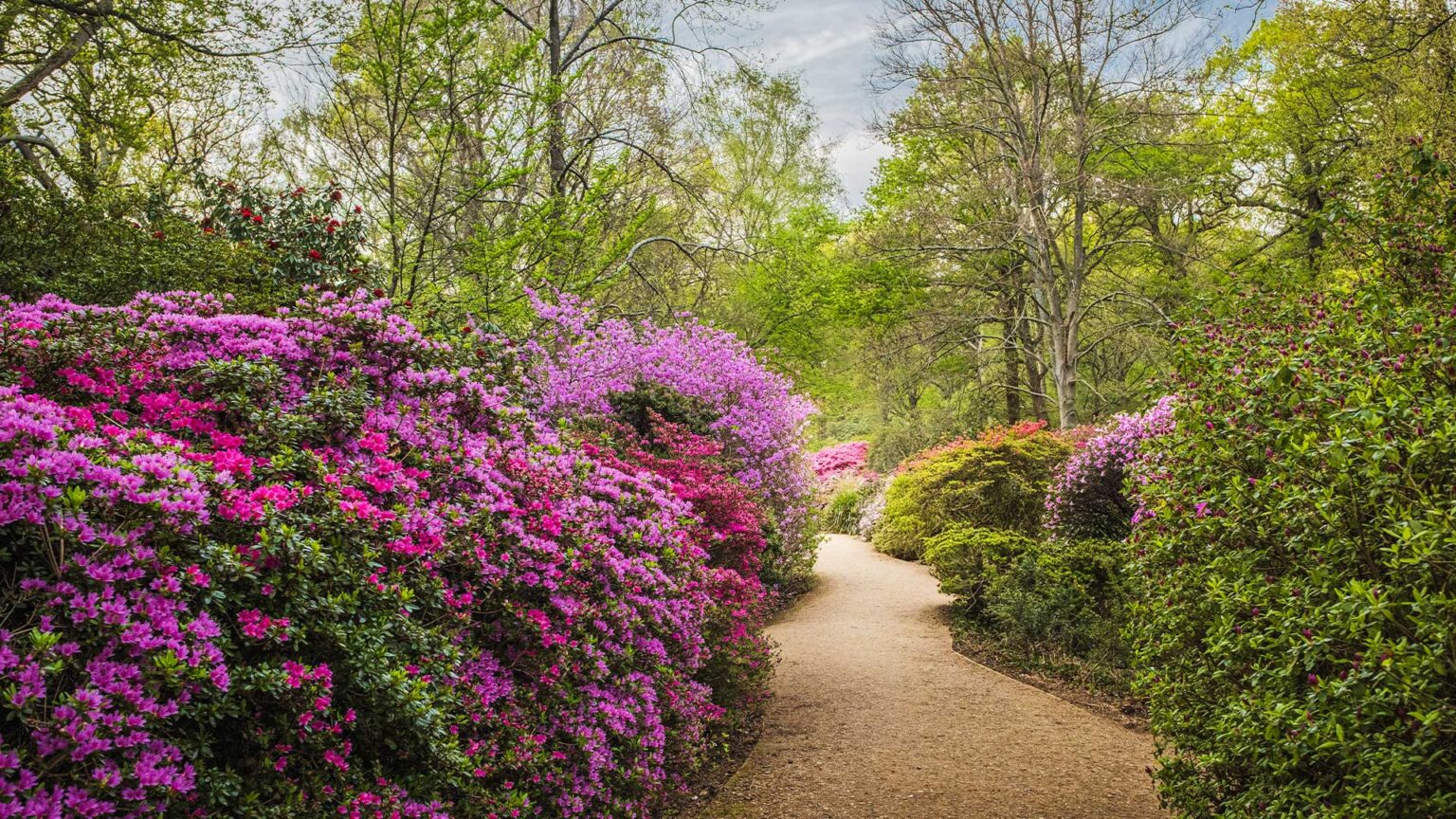
Notable Figures: William Sawrey Gilpin – A painter and landscape designer, Gilpin applied Picturesque theory to estate planning, helping shape early 19th-century naturalistic gardens.
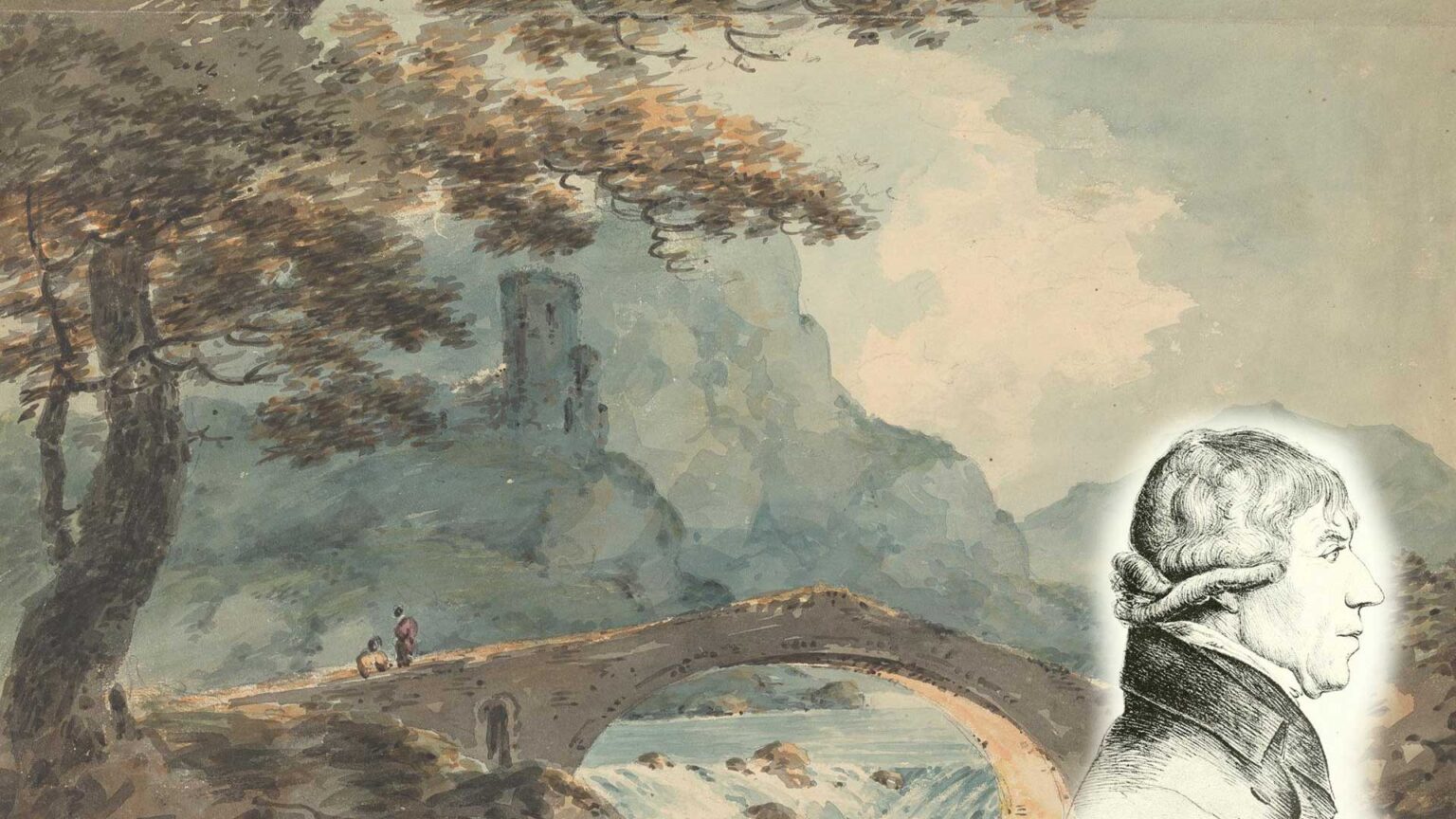
Notable Figures: John Claudius Loudon – Arguably the most influential garden theorist of the early Victorian era, Loudon published extensively on horticulture and design. His concept of the Gardenesque aimed to combine scientific botany with aesthetics, encouraging the display of individual plant forms and the use of exotic species.
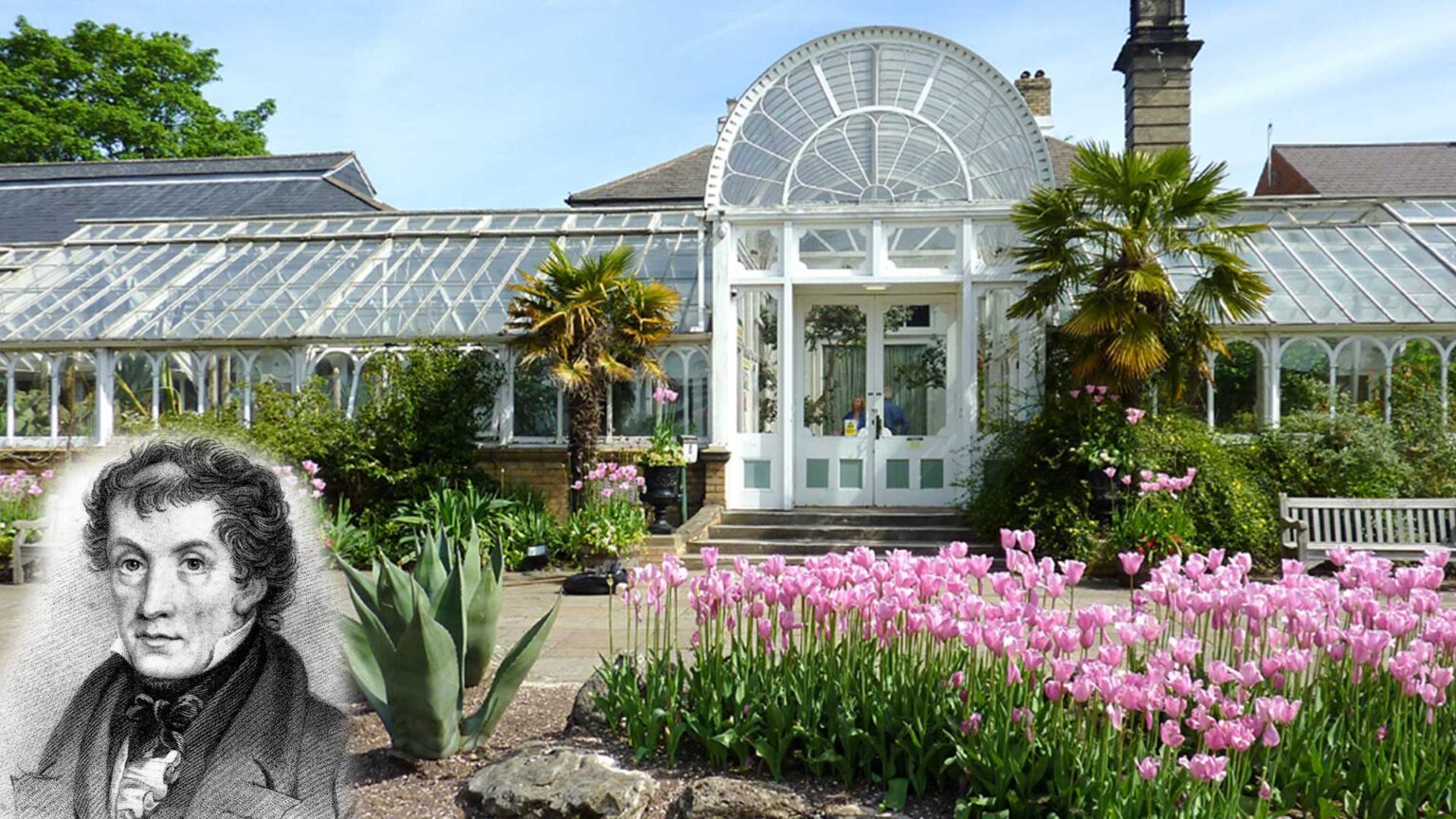
Mid-Victorian Gardens (1850s–1870s): Formality and Exhibition
The mid-Victorian period marked a shift towards greater formality and extravagance in garden design. This era was shaped by rapid industrial growth, urbanisation, and the Great Exhibition of 1851, which introduced millions to exotic plants and architectural marvels like Joseph Paxton’s Crystal Palace.
A more formal style of garden with parterres, topiary and symmetrical layouts became more common during the mid-Victorian period.
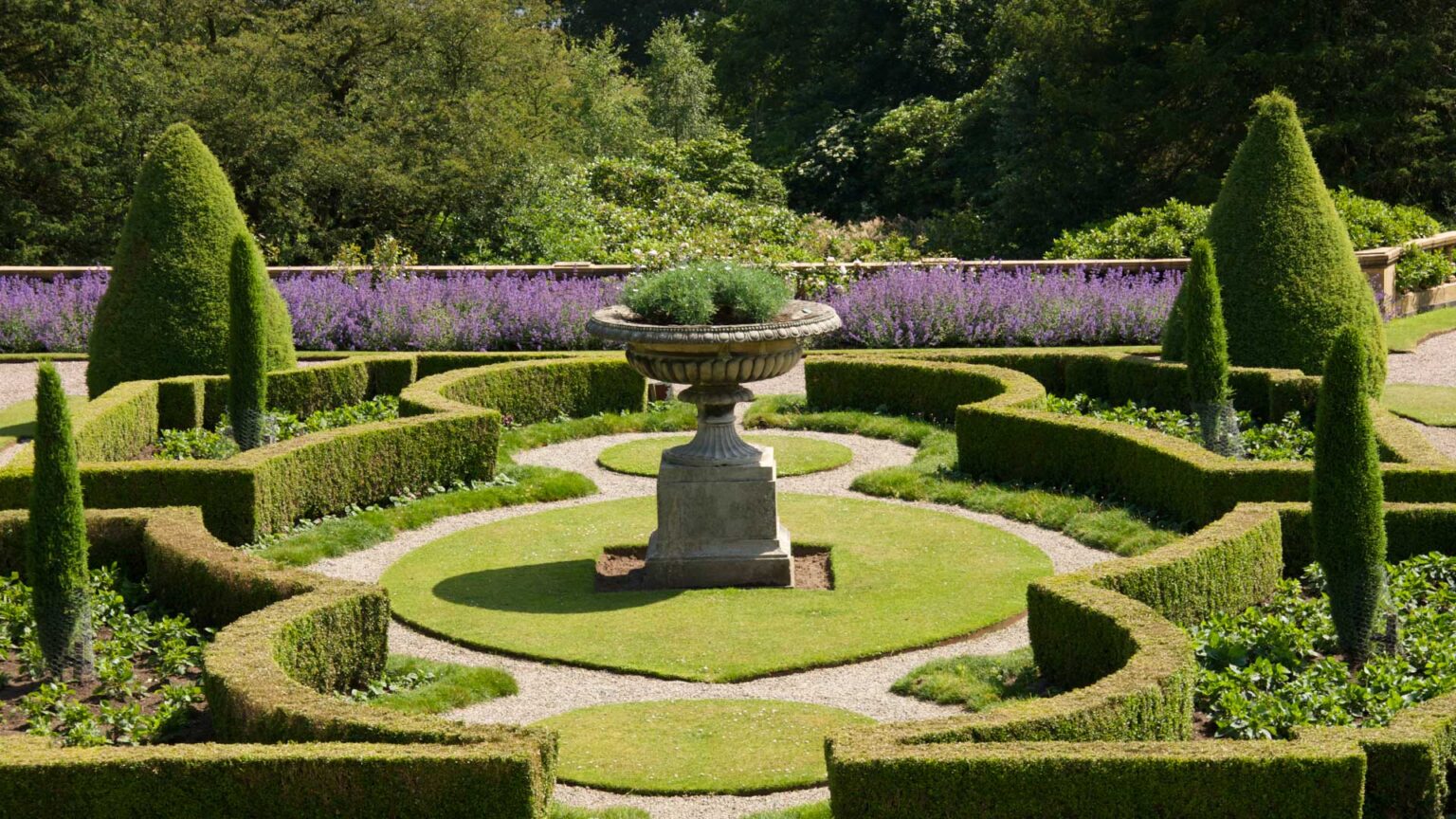
Landscaping and Groundwork: This was the era of civic pride and garden ornamentation. Formal parterres, terraces, and symmetrical layouts became widespread, especially in public and estate gardens. Raised beds, sunken gardens, and terraced lawns were common. Public parks emerged as a new social space, influenced by both aesthetics and public health concerns.

Paving and Hardscaping Materials: Mid-Victorian gardens saw the rise of industrial materials. Patterned tiles, brickwork, and mass-produced ironwork were extensively used. Cast iron, in particular, featured in everything from benches and railings to greenhouses and fountains. Concrete also began to appear in paths and edging.
Materials
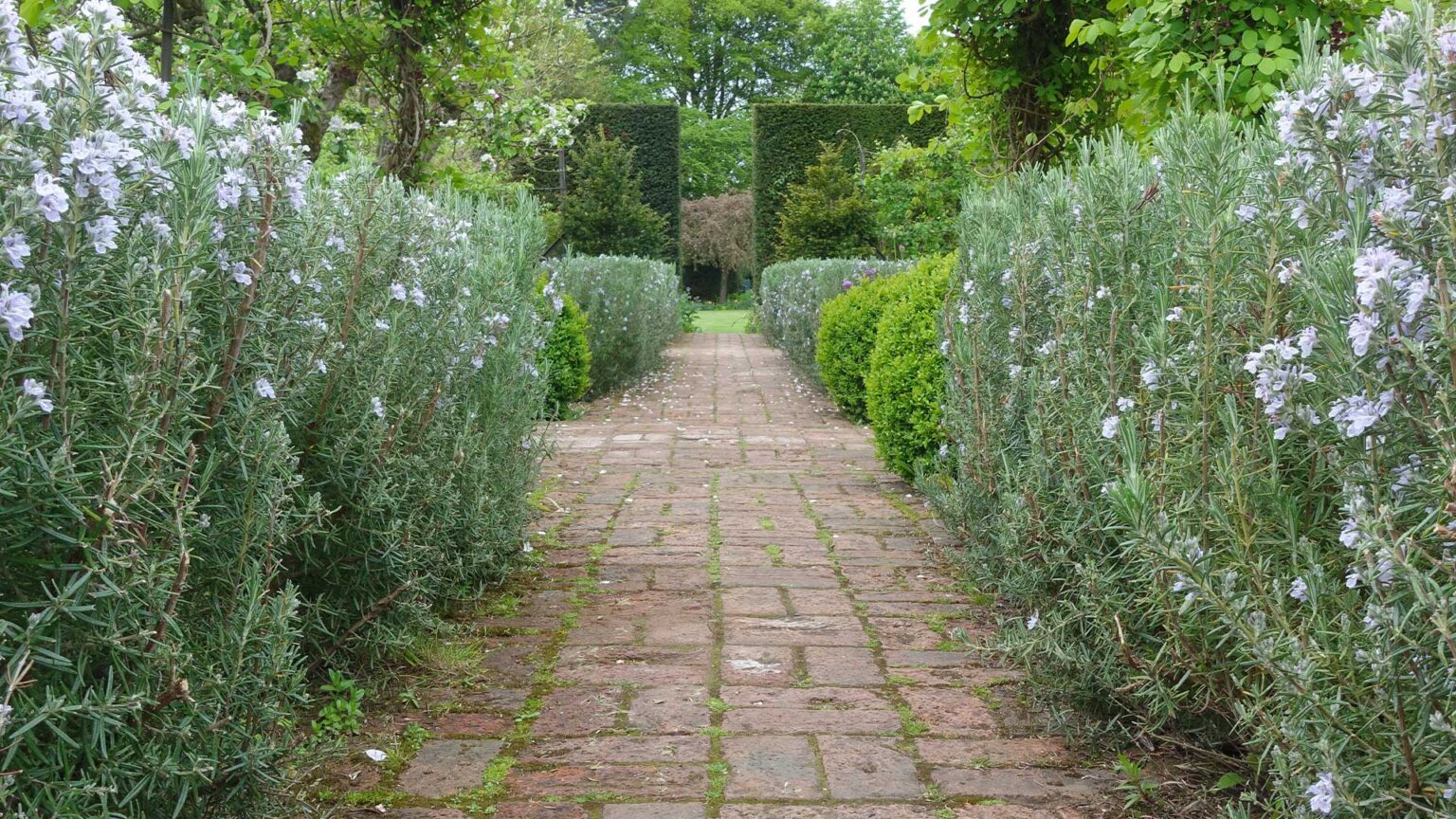
Design Motifs and Features: Fountains, sundials, balustrades, and topiary brought classical structure to gardens. Carpet bedding—a practice where vividly coloured flowers were arranged in geometric or pictorial patterns—was especially popular. The bedding-out system created bold colour displays using annuals like pelargoniums, petunias, and lobelias.
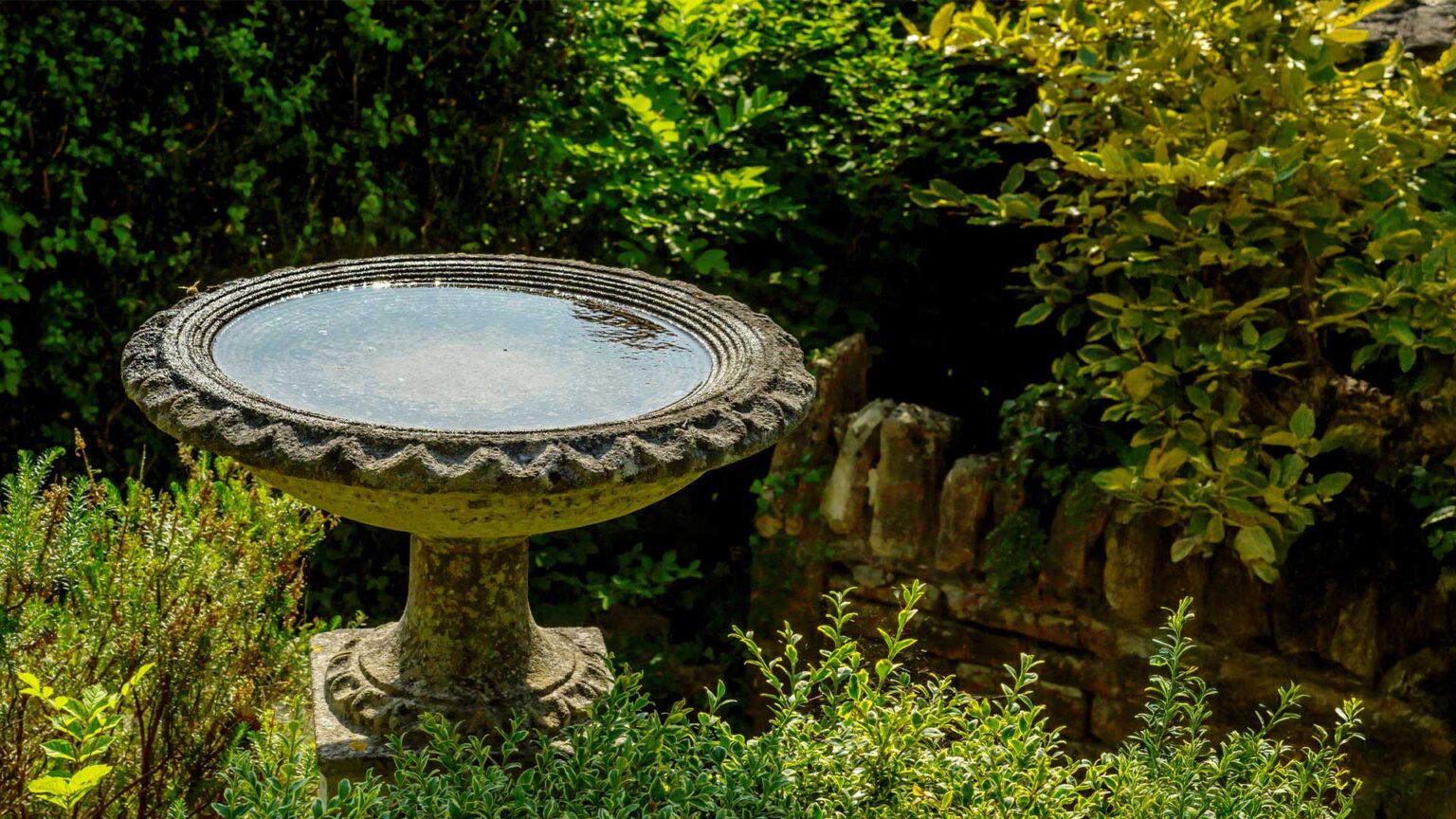
Planting Styles: This era saw an explosion of colour and formality in planting schemes. Tender annuals were raised in glasshouses and planted out for seasonal displays. Nurseries and plant hunters introduced an unprecedented number of new species, especially from Asia and South America. The mass production of bedding plants and widespread availability of horticultural knowledge empowered middle-class homeowners to participate in the gardening boom.
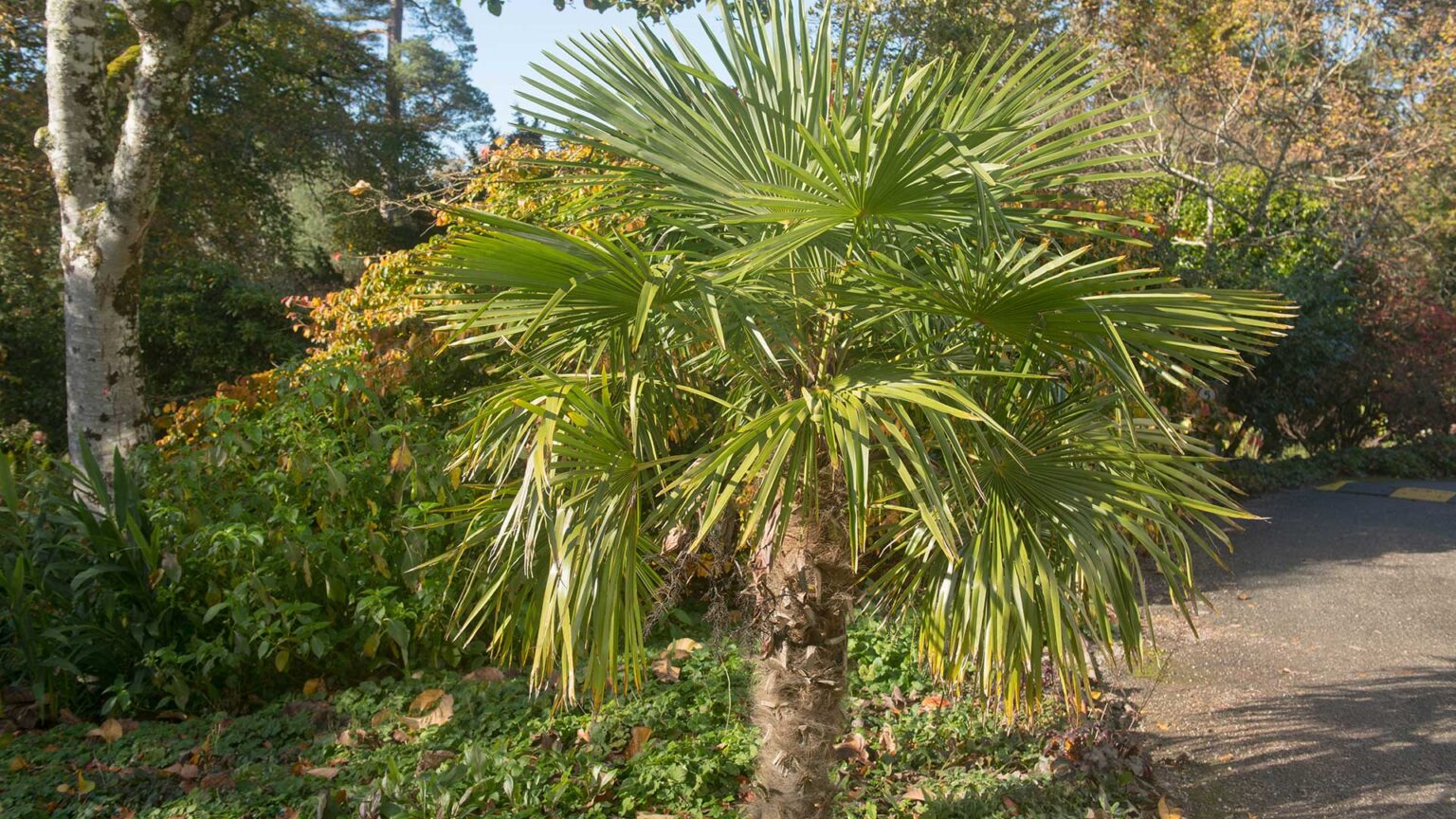
Notable Figures: Joseph Paxton – Head gardener at Chatsworth and designer of the Crystal Palace, Paxton was instrumental in the development of large-scale greenhouses and the popularisation of subtropical planting schemes.
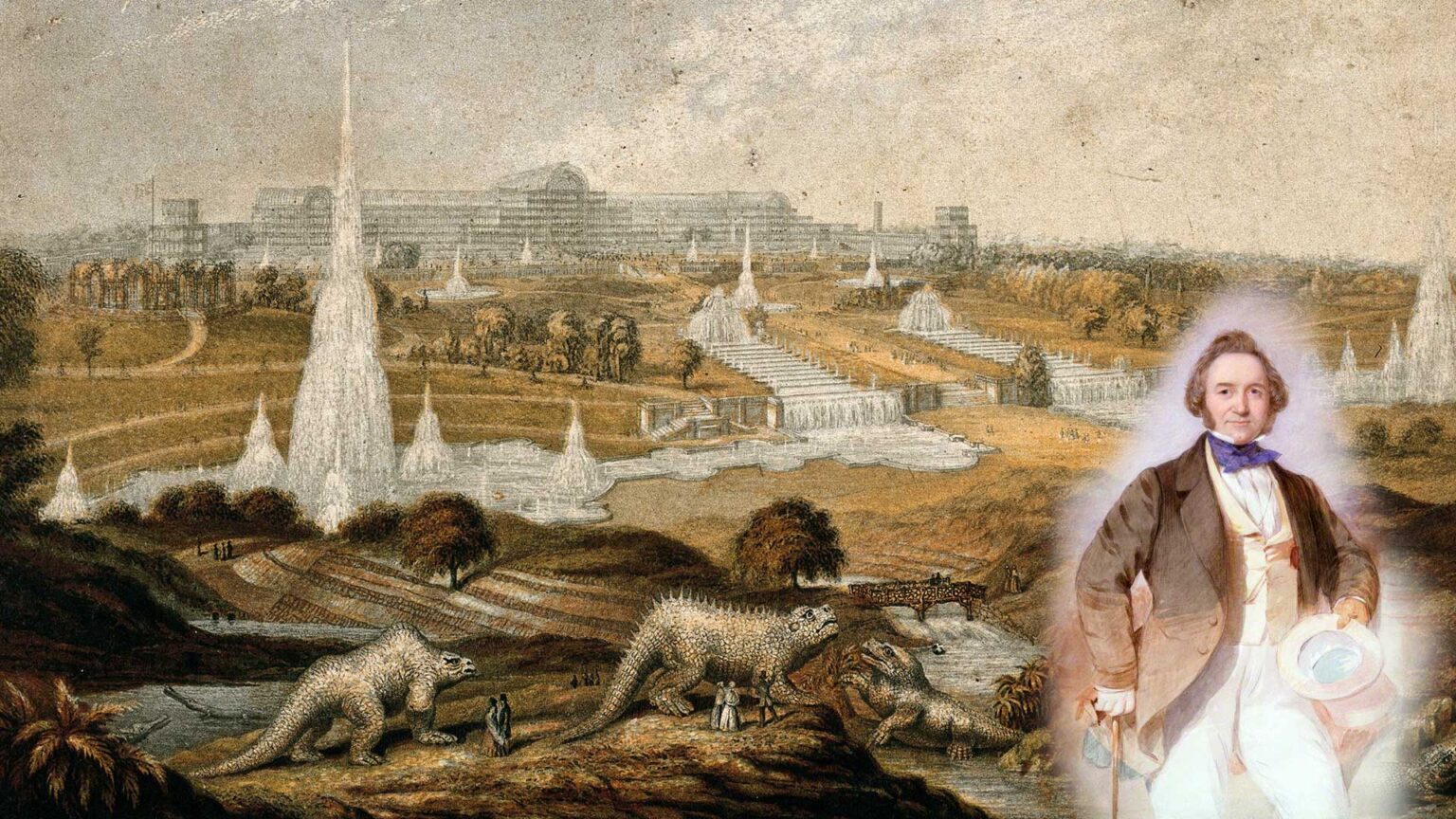
Notable Figures: William Cavendish, 6th Duke of Devonshire – Paxton’s patron and a key supporter of horticultural innovation. Chatsworth became a model for the opulent estate garden.

Notable Figures: Owen Jones – Though more widely known for his architectural colour theory, Jones’ interest in Islamic design and studies of the decorations at the Alhambra, helped influence ornamental garden elements and the polychromatic aesthetic of the High Victorian period.
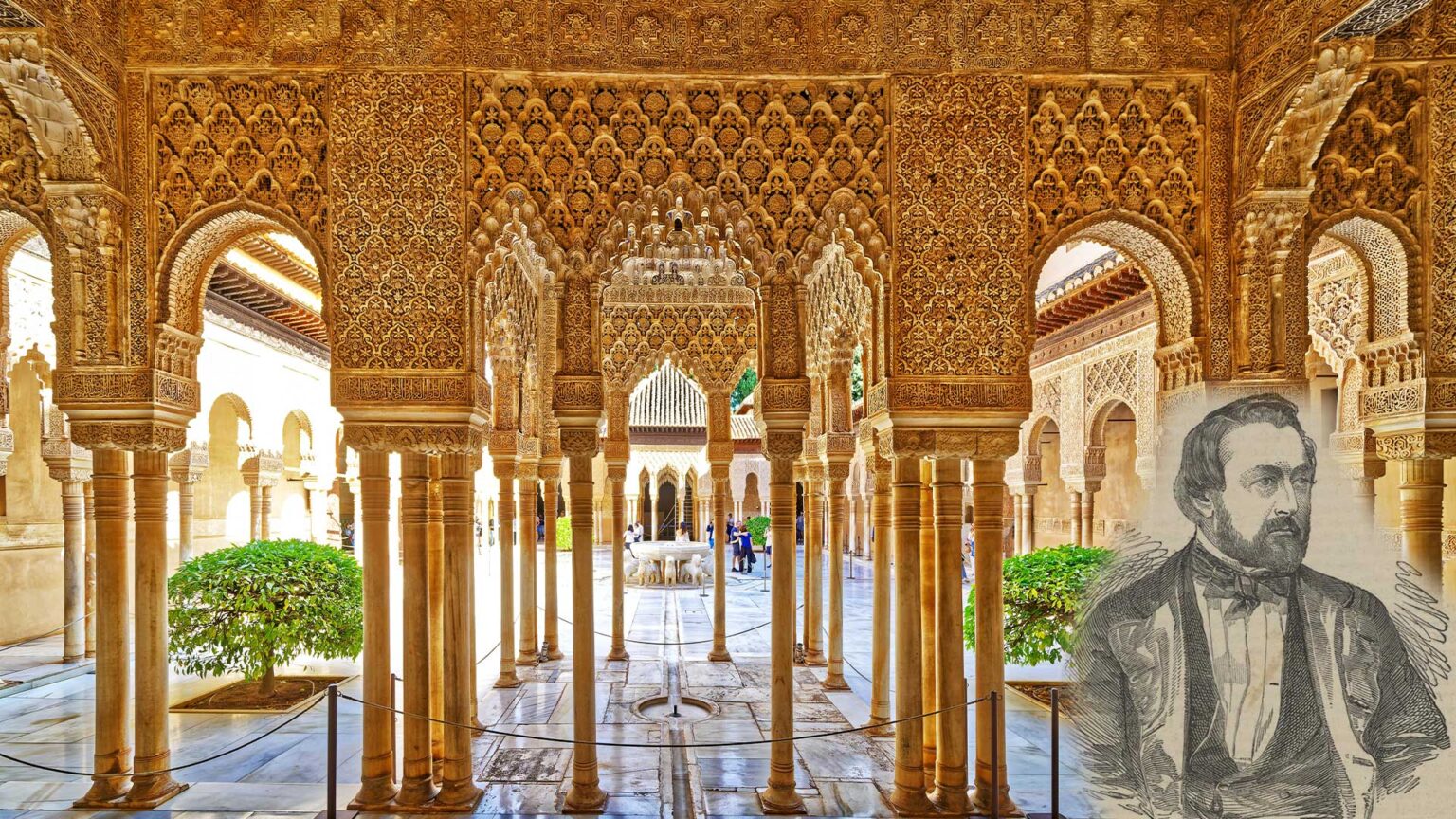
Late Victorian Gardens (1870s–1901): Naturalism and the Arts and Crafts Movement
As the century progressed, a backlash developed against the rigid formality and excessive ornamentation of mid-Victorian gardens. The late Victorian period embraced a return to more naturalistic aesthetics, influenced by the Arts and Crafts movement and ideas of ecological harmony.
Hestercombe House’s formal garden is an example of a Sir Edwin Lutyens garden design in combination with a planting scheme designed by Gertrude Jekyll, and demonstrates the more informal and naturalistic appearance of late-Victorian/Edwardian gardens.
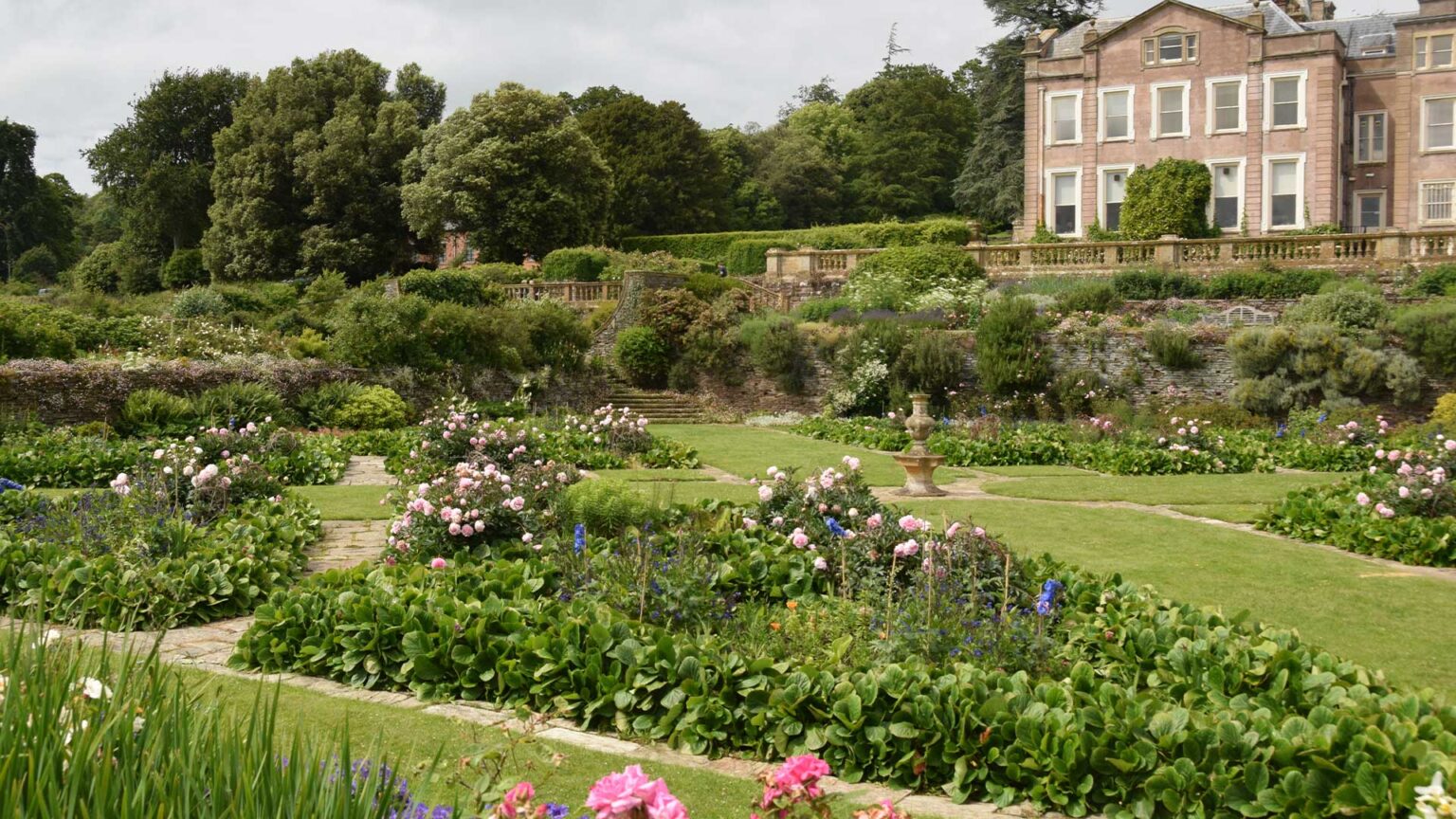
Landscaping and Groundwork: Curving paths, asymmetrical layouts, and a greater integration with surrounding landscapes defined the late Victorian style. Domestic gardens were designed to harmonise with architecture, with an emphasis on enclosure, privacy, and atmosphere.
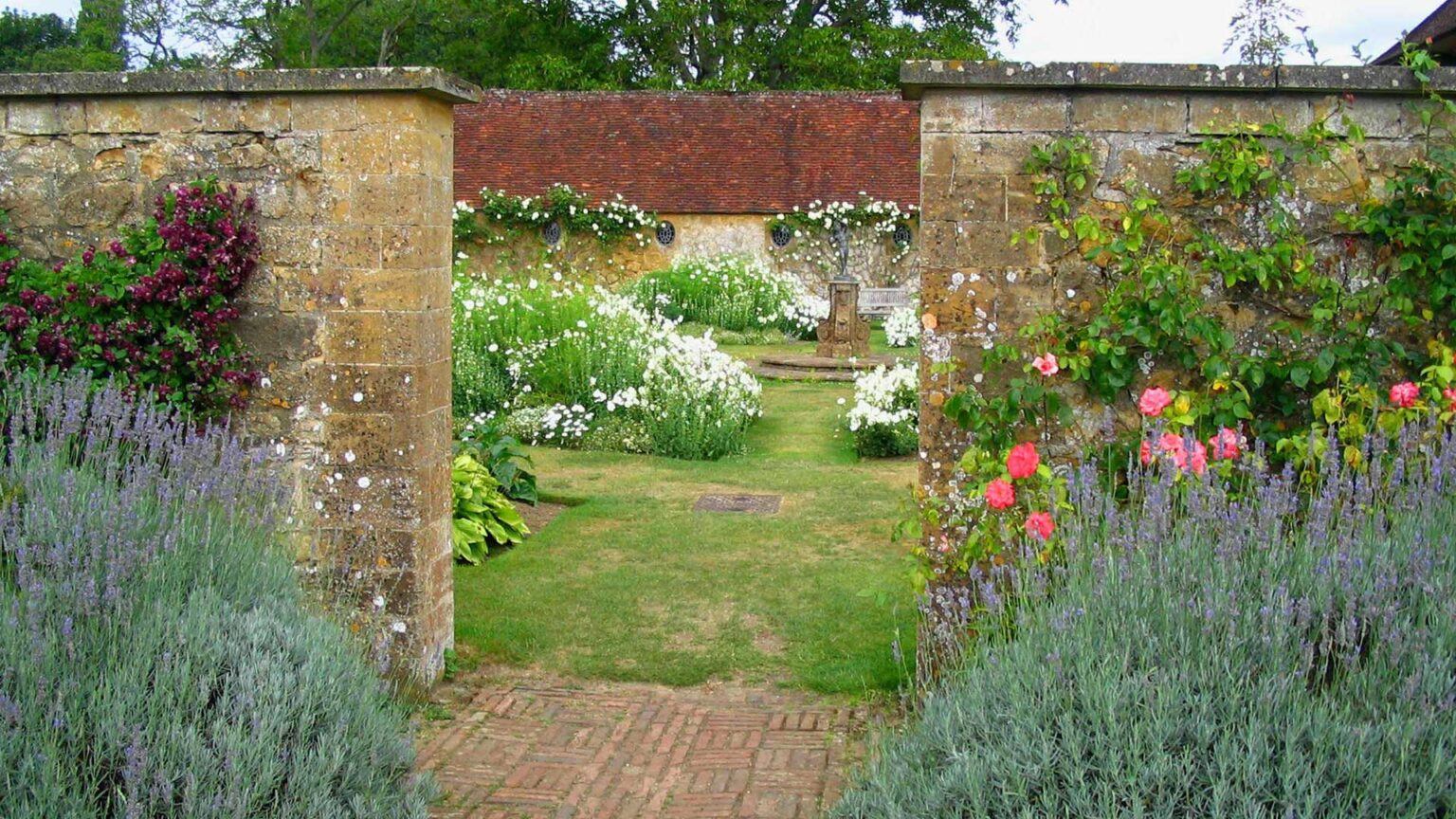
Paving and Hardscaping Materials: Natural materials came back into favour. Reclaimed stone, clay brick paths, rustic timber pergolas, and dry stone walls added texture and authenticity. Arbours and trellises supported climbing roses and clematis, creating layered vertical interest.
Materials:

Design Motifs and Features: Unlike the display-heavy mid-century designs, late Victorian gardens featured secluded garden rooms, herbaceous borders, and informal water features like lily ponds. Garden furniture became simpler and more integrated into the landscape.
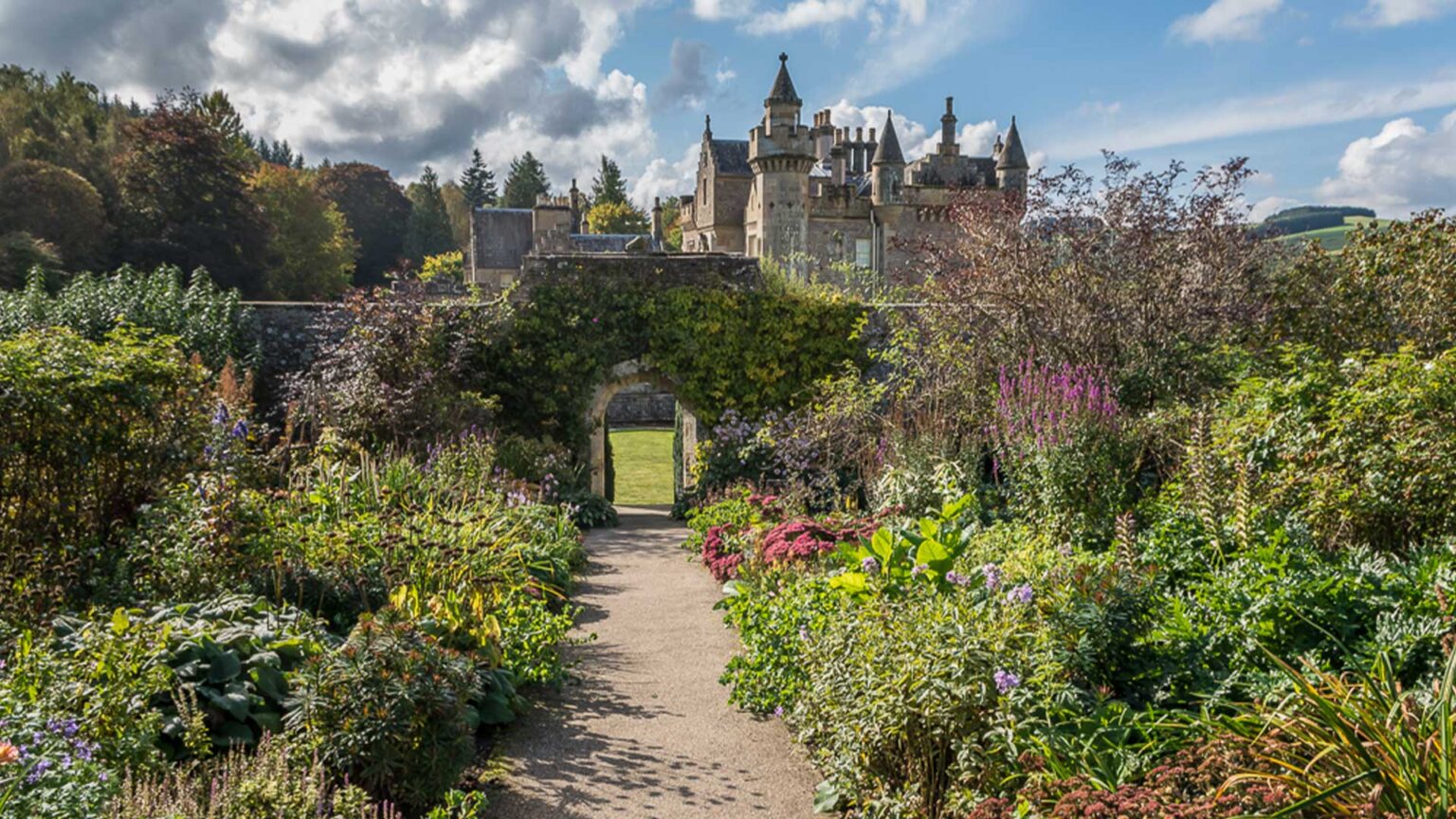
Planting Styles: Gertrude Jekyll, the most influential plantswoman of the period, pioneered the use of colour theory in planting design. Her painterly approach to herbaceous borders relied on natural transitions, drifts, and seasonal succession. Perennials, native species, and hardy shrubs took precedence over the exotic annuals of earlier decades. William Robinson, another towering figure, advocated for the “wild garden,” promoting informal layouts and sustainable planting.
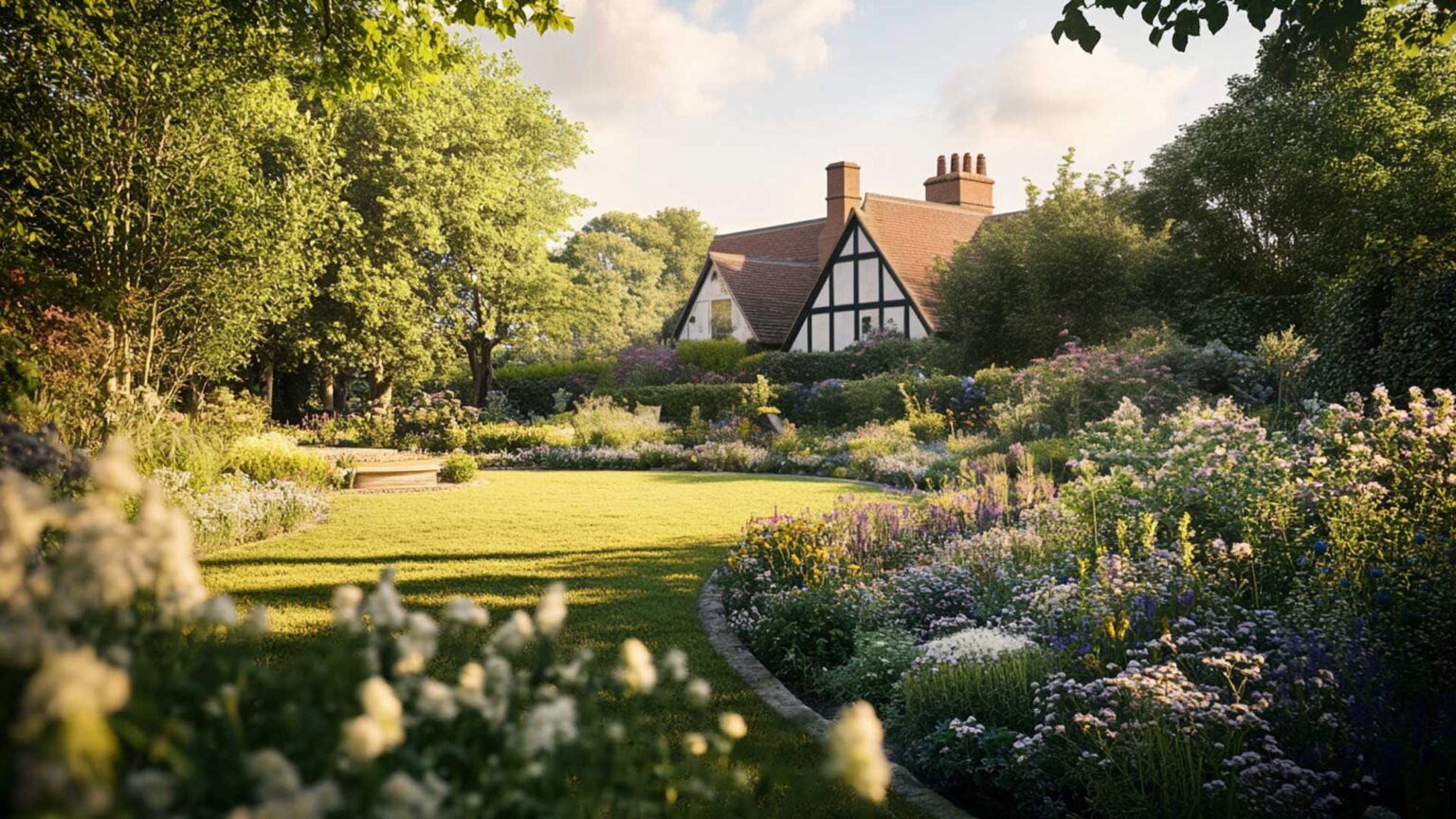
Notable Figures: William Robinson – Through his book The Wild Garden and his editorship of The Garden, Robinson transformed Victorian attitudes towards formality in planting. He favoured perennials, native species, and a naturalistic approach that rejected carpet bedding.
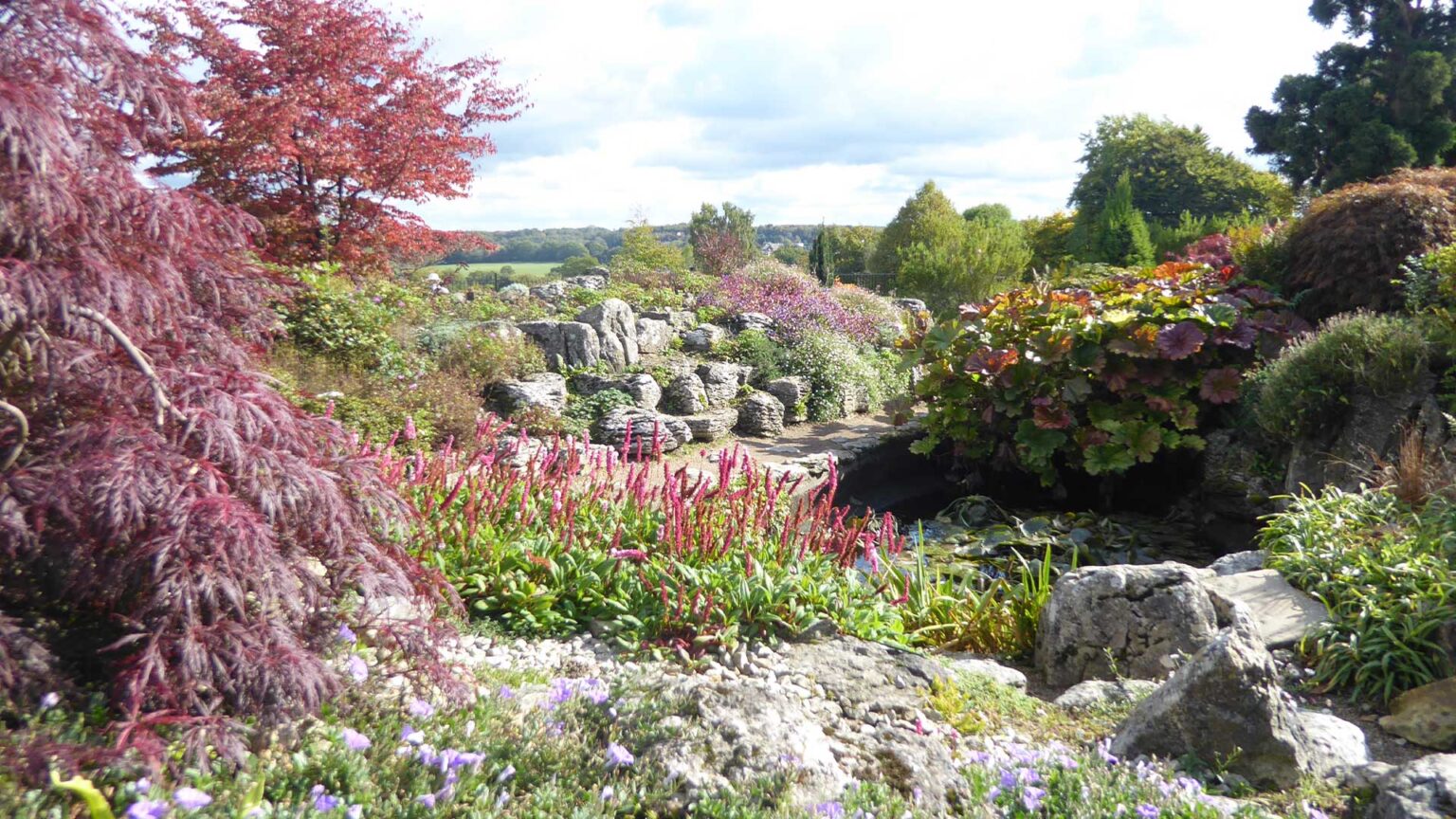
Notable Figures: Gertrude Jekyll – Gertrude Jekyll – A collaborator with architect Edwin Lutyens, Jekyll’s garden designs combined architectural form with soft, harmonious planting. Her work at Durmast House set a benchmark for domestic garden design.
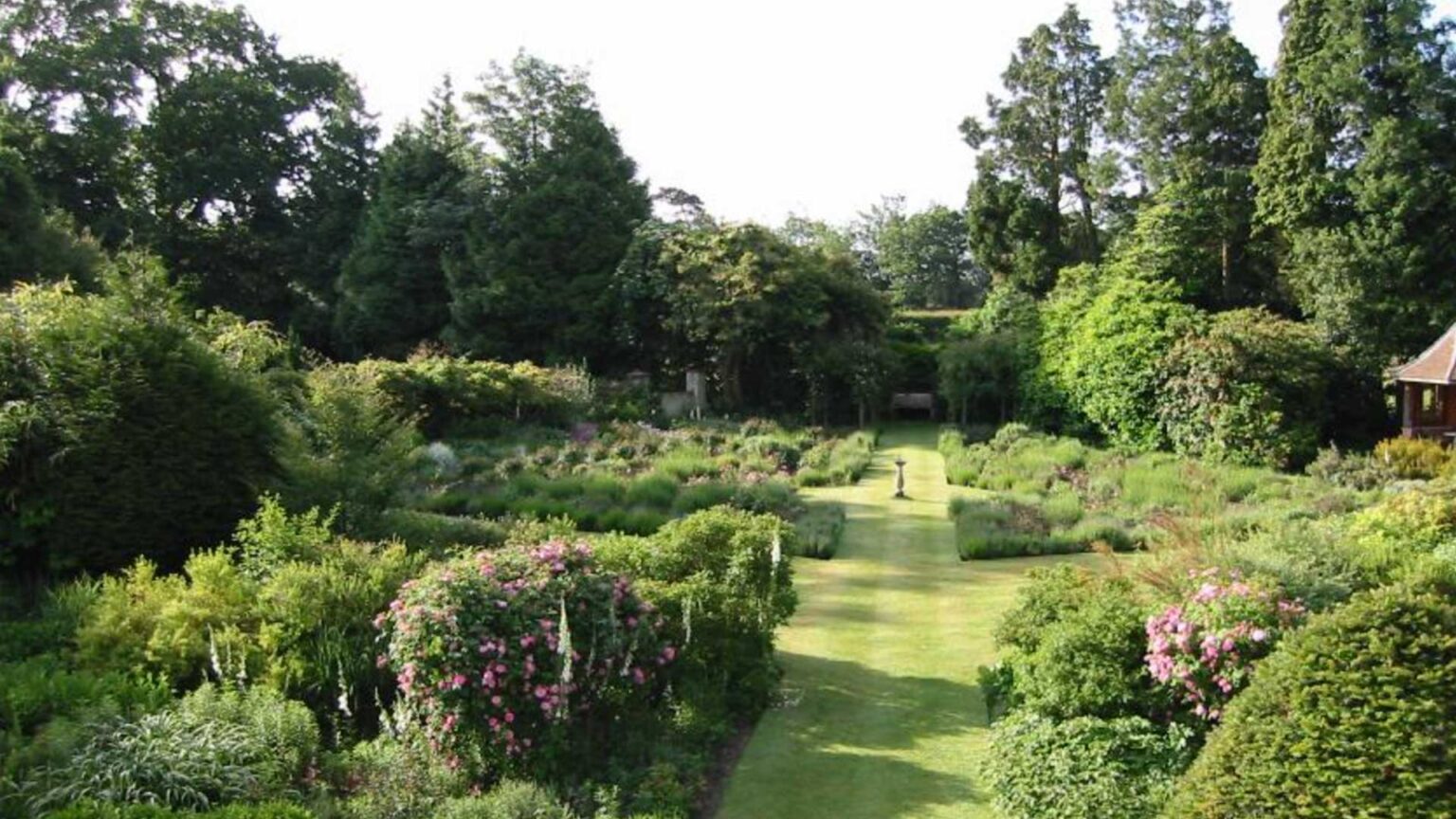
Victorian Movements and Styles in Context
The evolution of Victorian garden design is best understood as a sequence of movements, each responding to cultural and technological shifts:
- The Picturesque (Late Georgian–Early Victorian): Championed by Price, Knight, and Gilpin, this style emphasized natural beauty and scenic composition. Gardens were intended to look like paintings brought to life.
- The Gardenesque (1830s–1850s): Introduced by Loudon, this approach embraced botany, showcasing exotic species in isolation to highlight their individual forms.
- The Formal Bedding Era (1850s–1870s): Driven by industrial production and civic pride, this style celebrated bright, geometric flower beds and architectural symmetry. Paxton’s influence was critical here.
- The Naturalistic and Arts and Crafts Movement (1870s–1901): Spearheaded by Robinson and Jekyll, this movement brought a softer, more painterly approach to planting. It valued harmony with nature and historical craftsmanship.
Conclusion
Victorian gardens were not static—they were dynamic reflections of societal change, cultural aspiration, and artistic exploration. From the Romantic naturalism of the early years to the industrial grandeur of mid-century, and finally to the introspective beauty of Arts and Crafts-influenced design, the gardens of the Victorian period chart an extraordinary journey.
The figures who shaped these transformations—Loudon, Paxton, Robinson, Jekyll, and others—were visionaries who married science, aesthetics, and craftsmanship. Their legacy is visible today, not only in surviving Victorian gardens but in the very principles of modern landscape design.
As we look back on this rich period, we find that Victorian gardens, in their diversity and ingenuity, continue to inspire designers, gardeners, and historians alike.
